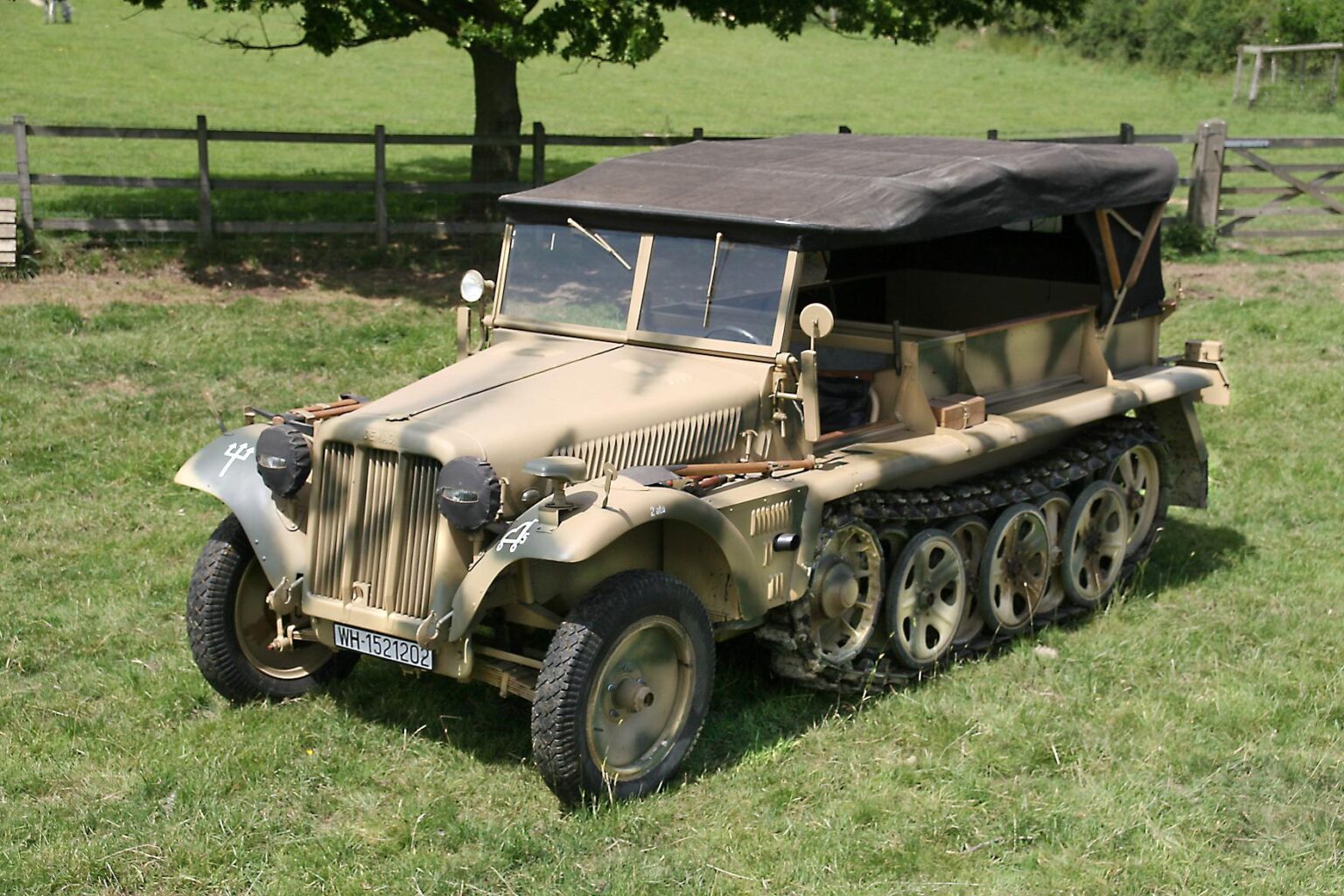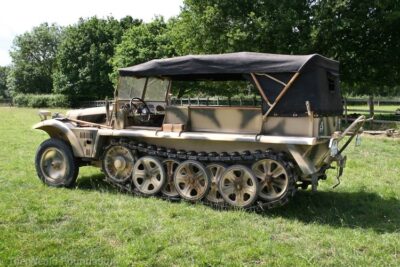Following a series of Army directives in 1932, Demag of Wetter Ruhr commenced work on the design of a semi-tracked artillery tractor capable of towing a one-ton load at high speed. The first vehicle of the series DII1 appeared in 1934. Development continued over the following years until 1937 when the pre-production model D6 was produced. The following year the D7 with a larger capacity Maybach NL38 and then HL42 appeared in service. This vehicle remained in production, with the design virtually unchanged, until 1944. In 1939 a new, even faster version was planned. As, however, the existing production vehicle was considered satisfactory, and this “D8” model did not move beyond the design stage.
The ability to carry almost 1.5 tons over broken ground led to the adoption of the chassis as a carriage for several different equipment types and weapons systems such as the self-propelled mount for the 2cm Flak 30 or 38. At the front, some were converted to mount the 37mm Pak 36 or 50mm Pak 38 anti-tank guns. Many were used to tow Nebelwerfers, and by 1943 they could be seen towing 75mm Pak 40’s, a load which exceeded their original design capacity.
Assembly of the leichte Zugkraftwagen 1t was undertaken by Demag. Adlerwerke, Büssing-NAG, MWC, MNH and Saurer.
From 1939 work commenced fitting an armoured superstructure on a shortened armoured version of this chassis, subsequently becoming the Demag D7p. This was the basis of the Leichter Schützenpanzerwagen (Sd.Kfz.250 series).
About Our Vehicle
In 1995 the Foundation commenced our hunt for a ‘1 Ton’ Sd.Kfz.10 Zugmaschine semitrack. The wish to secure an example of a 1 ton, or ‘Demag’, as it is incorrectly but more popularly known, had been growing for some time as it is such a historical and technically interesting vehicle. At the time there were many parts available but nothing substantial in body terms. Our frustration grew with the occasional appearance of other examples at various military vehicle shows in the mid-1990s.
The drought eventually broke when we were eventually offered an example by a collector widely respected for his knowledge of Zugkraftwagen 1t semitracks. This one had been assembled by Demag itself in 1941. The deal was agreed with the project in situ awaiting restoration in the workshops of an individual based just outside Rouen, renowned for his history in restoring 1-ton Zugmaschinen. This would be yet another leichte Zugkraftwagen 1t (Sd.Kfz.10) Ausf.B for him to complete. What made the deal more compelling was that the collector had amassed a great deal of parts over the years in his determination to complete the project. His window had opened for the workshop team to start his Zugmaschine, but his circumstances did not allow him to do so. A sale was preferred. This was the ideal scenario for the Foundation. We were left with only a limited number of items to track down from the Zugkraftwagen 1t parts list.
The history of this vehicle is not fully known other than that it had been saved from a river in Lithuania. A collector friend of ours insists he has photos and a video of the moment the Zugkraftwagen 1t was removed from the river. These details will follow.
Once we had agreed terms with the French restorer work progressed steadily and any restoration issues were resolved during our frequent trips to Rouen.
The search for spare parts and minor items still outstanding continued to this day. We were fortunate as there were few ‘1 ton’ and no Sd.Kfz.250 (which has pretty much the same drive train) being restored in the mid-1990s and parts were available at prices acceptable to the charity. Track links, for example, could be bought for as little as £5 each! By 2006 they were selling at between €100 and €120 each. The Foundation was quite aggressive in buying the parts offered to us for this series of semitracks. Those extra parts proved invaluable for our later Sd.Kfz.250 Ausf.A and B projects. The body repair of our Zugkraftwagen 1t was completed in approximately two years before brought back to the Foundation workshop for the final stage of restoration. In just under six months the drive train, wiring, paint finish and hood were all completed – just in time for us to unveil the vehicle at the 1998 War and Peace Show.
- This article has 710 words
- Reading time: 3 minutes
- There are no photos
Become a Member - Access the Full Article
Members gain access to the full content of our articles, including photo galleries.


